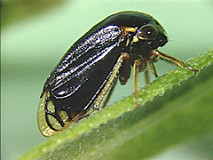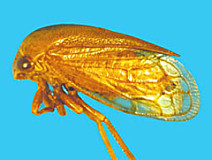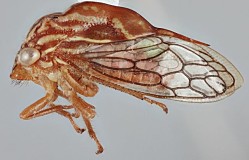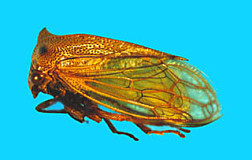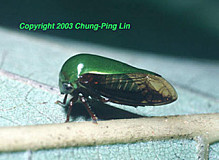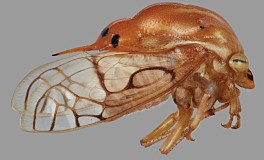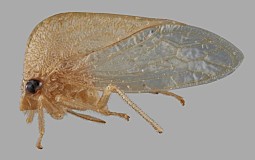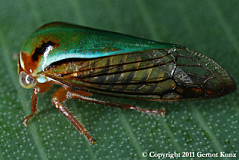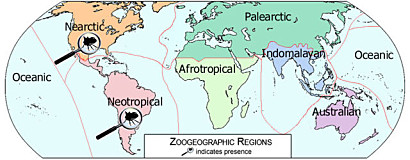Fowler 1895c
Funkhouser 1951a
Metcalf and Wade 1965a
Deitz 1975a
McKamey 1998a
Sakakibara 1998a
Godoy, Miranda, and Nishida 2006a
Wallace 2010a
McKamey and Wallner 2022b
McKamey 2023a
Animalia → Arthropoda → Insecta → Pterygota → Hemiptera → Auchenorrhyncha → Cicadomorpha → Membracoidea → Membracidae → Smiliinae
Acutalini Fowler, 1895
Selected references
Overview
McKamey 2023a published an updated key to all 8 genera (3 new) of the tribe based on features of the forewing venation and the pronotum. That work also gives an historical overview of tribe. As noted below, McKamey and Wallner (2022b) described and illustrated the nymphs of Acutalis, Bordoniana, and Thrasymedes, and provided a key to the 5th instars of these genera.
Taxon images
Acutalini
2.
Bordoniana venezuelana, lateral...
↴
Distribution
Neotropical and Nearctic regions: throughout the temperate and tropical regions of the Americas and the West Indies.
Diagnostic characters
Pronotum simple or with suprahumeral horns; posterior process not concealing forewing in repose. Forewing with veins R, M, and Cu separate near base; R2+3 present as distinct branch of R; with or without s crossvein; with 1 or 2 m-cu crossveins. Hind wing with 1 r-m crossvein; marginal vein R2+3 distinct.
Immatures
McKamey and Wallner (2022b) described and illustrated the nymphs of Acutalis, Bordoniana, and Thrasymedes, along with a key to the 5th instars of these genera. The eggs are deposited within stems.
Ecology
Not attended by ants, the nymphs are remarkably cryptic on their host plants (McKamey and Wallner 2022b).
Behavior
The nymphs are solitary (McKamey and Wallner 2022b).
Taxonomic constituents
Acutalis Fairmaire, 1846 Fairmaire, 1846
Bordoniana Sakakibara, 1999 Sakakibara, 1999
Ceresinoidea McKamey, 2023 McKamey, 2023
Cornutalis Sakakibara, 1998 Sakakibara, 1998
Euritea Stål, 1867 Stål, 1867
Quinquespinosa McKamey, 2023 McKamey, 2023
Tectiforma McKamey, 2023 McKamey, 2023
Thrasymedes Kirkaldy, 1904 Kirkaldy, 1904
Prepared by
Lewis L. Deitz, Stuart H. McKamey, Mark J. Rothschild, and Matthew S. Wallace, 17 May 2023.


